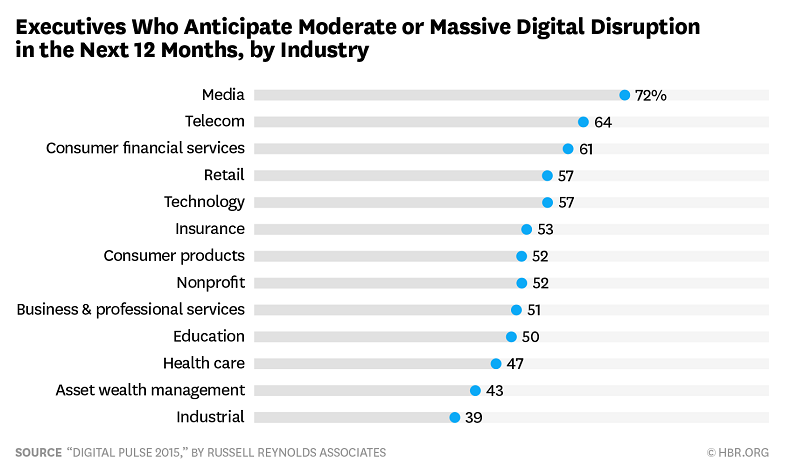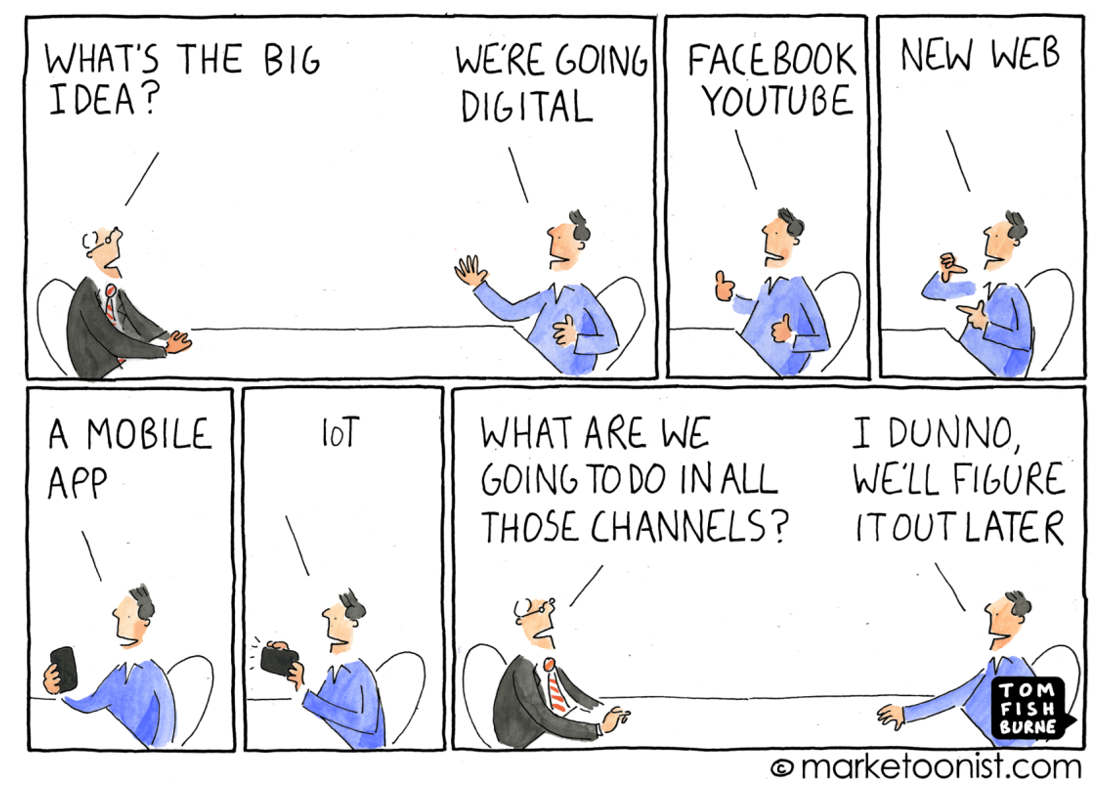For a start, it is pushing the boundaries of what we thought was possible and making science fiction seem real. Most importantly, it has opened up new avenues for businesses to innovate and disrupt the market, which is exactly what the so-called "digital disruptors," such as Google, Apple, Facebook, Amazon, and Netflix, in fact did, and continue to do. Established businesses, such as Blockbuster and Kodak, couldn't cope with the (digital) innovation introduced by Netflix and Apple, and ended up filing for bankruptcy. Traditional industries, such as the taxi industry and hospitality, are also being severely disrupted by Uber and Airbnb.
Figure 1.1: Apple digitally disrupted Kodak
These companies are just the obvious examples that everyone talks about. With over 100 million new start up businesses launched every year, even if only 10% (as analysts predict) are successful, we are talking about 10 million new companies with the potential to become the new Netflix or Uber, but for different industries.
Now, because of this, it's no wonder that most organizations globally have embarked on digital transformation initiatives in order to avoid being (further) disrupted. As Harvard Business Review (HBR) nicely put it:
"Digital is no longer the shiny front end of the organization - it's integrated into every aspect of today's companies."
According to the same article by HBR, the most disrupted industries are those that relate to Business to Consumer (B2C), with media and telecom at the top of the list, closely followed by financial services and retail:
Figure 1.2: Disruption according to industry
However, these figures should not come as a surprise. A closer look shows that there is a direct correlation between the disrupted B2C organizations and the fact that 2 billion individuals are using their smartphones and other devices frequently. Put simply, B2C organizations that haven't been able to innovate and engage customers in different ways, and through digital channels, are more susceptible to being disrupted by newer and more agile businesses:
"The most disrupted industries typically suffer from a perfect storm of two forces. First, low barriers to entry into these sectors lead to more agile competition. Secondly, they have large legacy business models which often generate the majority of their revenue. These organizations, therefore, have embedded cultural and organizational challenges when it comes to changing at the pace required."































































